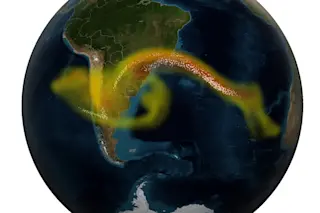Earth’s first life evolved in hell.
The earliest lifeforms emerged at least 3.95 billion years ago, at a time when a near constant barrage of comets and asteroids were bombarding our still solidifying planet. That’s the implication of new research published in the journal Nature on Wednesday.
A group of Japanese scientists journeyed into a remote stretch of northern Labrador, Canada, where they chiseled samples from some of Earth’s oldest rocks. They braved bugs, bad weather and polar bears; they returned with what could be evidence for some of the oldest life on Earth.
The results are controversial — other experts doubt their dates. But they join a growing chorus of researchers pushing back the origin of life to a time when scientists once thought Earth would be uninhabitable.
“I would agree with their conclusion,” says Matthew Dodd of the University College London, who was not involved in this study. ...














